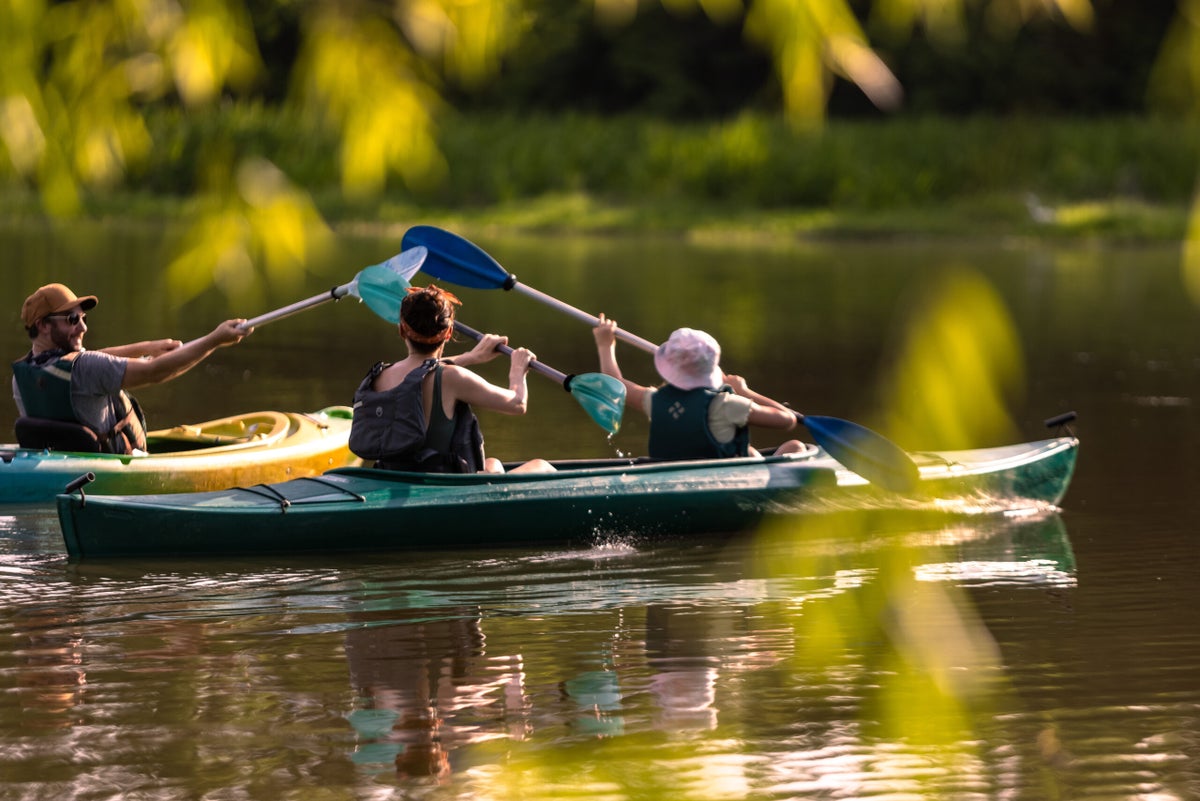No products in the cart.
Outdoor Adventure
6 Surprising Outdoor Adventures in Mississippi to Add to Your Bucket List
Mississippi’s forested hills and wetlands are part of ancient ecosystems that first attracted mound builders over 300 million years ago and later drew outdoors lovers, such as Teddy Roosevelt and John James Audubon.
“Mississippi indeed is a paradise for people like ourselves, paddlers, birders, naturalists, um, geologists, geographers, kids, parents… Those seeking a soulful or spiritual rejuvenation, poets, and painters,” says John Ruskey, owner of Quapaw Canoe in Clarksdale.
See what makes Mississippi’s landscapes such a special place for outdoors adventures. And don’t forget to follow the CDC guidelines, including social distancing and masks, when you visit.
Exploring Tishomingo State Park
Mississippi may not have the big peaks found elsewhere in the United States, but that doesn’t mean there’s no hiking. Tishomingo State Park, located in the northwestern part of Mississippi just across the state line from Alabama and at the foothills of the Appalachian Mountains, is home to the highest terrain in the state. The park takes its name from a Chickasaw chief and excavations at this park have revealed items dating back to 7000 BC.
With 13 miles of trails of varying difficulty, the park has plenty of options for hiking. There’s also a cliff where visitors with a permit can rock climb, a disc golf course, and canoeing and fishing available on Bear Creek and Haynes Lake. You can turn your visit into a multi-day adventure by spending the night at one of the park’s RV or tent campsites.
Paddling the Mississippi River
The Mississippi River is the nation’s second longest river, spanning over 300 miles within the state’s boundaries. The river’s incredible biodiversity attracts everything from snow geese to Monarch butterflies. See the mighty river for yourself on a day trip or overnight paddling excursion with Quapaw Canoe, which has outposts in Vicksburg and Clarksdale. After a day on the water, visit the Delta Blues Museum to see artifacts, including Muddy Waters’ cabin.
Snorkeling at Ship Island
Just off the coast of bustling Biloxi six barrier islands along the Gulf of Mexico make up the Gulf Islands National Seashore. Ship Island is the most accessible of the six, with seasonal ferry services offered daily by Ship Island Excursions from Gulfport.The twelve-mile journey takes one hour and drops passengers off on the north side of the island. From there you can visit Fort Massachusetts, which was built after the War of 1812, and take a free tour from the National Park Service rangers.
The island also has many nearly-private beaches that are a great launchpad for snorkeling (make sure you bring your own gear) and other ocean activities. When it’s time to return, book a night at Biloxi’s Beau Rivage Resort & Casino.
Cycling on the State’s Rails-to-Trails Paths
Mississippi’s long railroad history has literally paved the way for today’s rails-to-trails paths, found throughout the state. The Longleaf Trace runs 44 miles through Hattiesburg, including through the campus of the University of Southern Mississippi and its top-notch art museum. You can view public art along the way, including one of the largest murals in the city, following the former route of the Mississippi Central Railroad.
In northeastern Mississippi, the Tanglefoot Trail was a Chickasaw trail later navigated by Union soldiers. The Gulf and Sheep Island Railroad laid tracks along the route, which is now a nearly 44-mile trail between New Albany and Houston. BYO bike or rent from local outfitters, depending on your travel plans.
Camping on the Natchez Trace Parkway
The Natchez Trace Parkway is a scenic byway that runs through Tennessee and Alabama before cutting into Mississippi. The road follows the Native American trading routes and is a popular route for road trippers and motorcyclists. One of the best ways to experience the parkway is taking your time, stopping at the historic landmarks, and camping along the way. The National Park Service runs three free campgrounds, including two in Mississippi. Jeff Busby Campground, at milepost 193.1, is west of Starkville and has 18 RV sites. Rocky Springs Campground, at milepost 54.8 near Port Gibson, has 22 sites. There are also three bicycle-only campgrounds along the route.
Fishing at Ross Barnett Reservoir
Mississippi has no shortage of locations for recreational fishing, but the Ross Barnett Reservoir, located near the capital city of Jackson, is one of the best. This section of the Pearl River has over 100 miles of shoreline, providing both recreation and drinking water for residents thanks to the dam and spillway that create the reservoir. The lake hosts major fishing tournaments and claims the state record for the biggest smallmouth buffalo and bowfin. Largemouth bass, catfish, and crappie can also be found throughout much of the year. Anglers can access the lake at one of 22 boat ramps along the reservoir and stay at the five campgrounds.
Mississippi is a wonderland for outdoor lovers. More than 60 percent of the state is forested, with plenty of available land for hiking, hunting and fishing. There are abundant opportunities for river recreation, too—everything from multi-day Mississippi River adventures to short trips via canoe, kayak, or inner tube.
Source link

